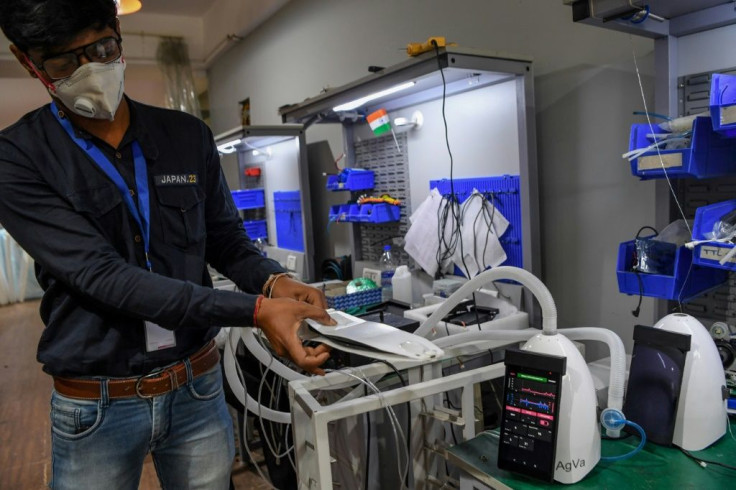Why Ventilators Play A Huge Role In Fighting COVID-19 And Why Hospitals See Shortage?

KEY POINTS
- Ventilators are critical machines used to help patients breathe
- There is a serious shortage of ventilators at the moment
- Extremely Ill COVID-19 patients need ventilators for more than a week
Hospital officials have been begging for more ventilators as COVID-19 patients continue to their facilities. The machine pumps air in and out of the lungs of the patient through a tube that has been inserted into the patient’s windpipe.
With the rising number of patients complaining difficulty of breathing, hospitals say they need more ventilators to help them. The problem is there are not enough ventilators at the moment for hospitals to get their hands on.
Ventilator And Respirator
A respirator is different from a ventilator in the sense that the former takes the form of a protective face mask, which prevents the wearer from inhaling dangerous airborne particles. An example of a respirator is the N95, which hospital staffs wear to protect themselves from acquiring COVID-19 infection.
A ventilator, on the other hand, is a device that provides critical oxygen to people who cannot properly breathe on their own. Since COVID-19 attacks the respiratory system, the victim may experience shortness of breath or, in acute cases, may have trouble breathing. In this situation, a ventilator could be the only thing that spells the difference between dying and living.
An Increasing Need
According to Dr. Daniel Griffin, the need for more ventilators may increase during the second week of battling the outbreak. The need for such devices is crucial, particularly for severe cases. Dr. Griffin is the head of infectious disease at ProHEALTH Care.
In an interview with The Post, Dr. Griffin said that in the first week, people might feel crummy like having that sensation of suffering from a viral illness. During the second week, some people may start developing great difficulties when breathing.
The Point When Ventilators Are Needed
When patients have trouble breathing, they will start to breathe rapidly or twice as fast as they typically do, or around 20 to 30 times per minute. The reason for this is because the lungs are becoming inflamed, and the patients will be fighting to breathe in as much oxygen as they can into their bodies. It is at this point that medical professionals will turn to a ventilator.
Dr. Griffin explained in layman's term when ventilators are needed. He said it is like running a marathon where you cannot stop, but there is also a part of you that tells you cannot keep ongoing. The ventilator is like a car, you can jump in and let somebody else drive it for you.
A Shortage Of Ventilators
According to the Society of Critical Care Medicine, time will come when approximately 960,000 COVID-19 patients in the US may need to use ventilators at some point during the pandemic. The health organization, however, said there are only around 200,000 ventilators available now.
The big gap in ventilator supply and demand resulted from the rapid spread of the coronavirus and the immediacy in which an infected patient needed the machine. The chairman of emergency medicine at Northern Westchester Hospital, Jim Dwyer, said that it is unusual for a regular ICU patient to be on a ventilator for over a week. Coronavirus patients, however, require them at a much longer time.
A Call For Help
President Trump, last Friday, for the first time, used his authority under the Defense Production Act to order General Motors to begin making ventilators. The machines they produced will be used to deal with the worsening crisis.
Ford Motor Company also announced its plans this week to build 50,000 ventilators in 100 days. Company officials said they are going to manufacture the ventilators at their Michigan car-parts plant.
© Copyright IBTimes 2024. All rights reserved.





















